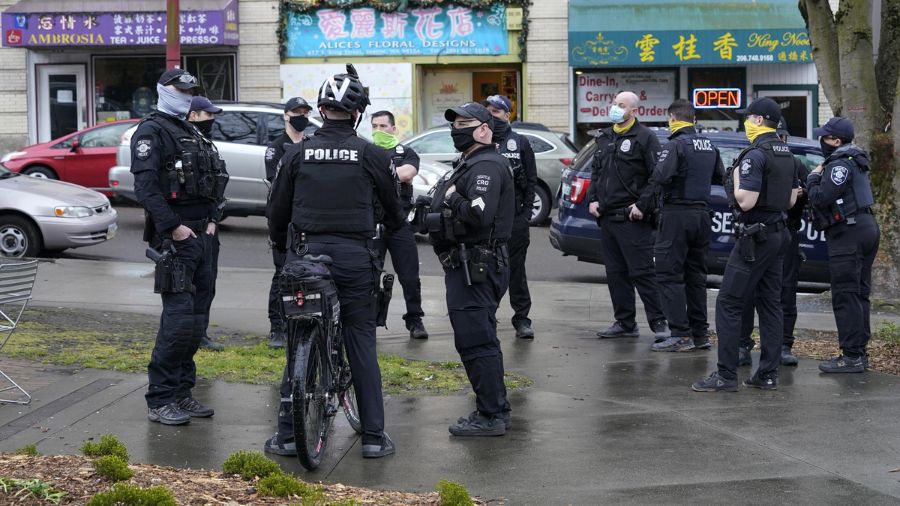Washington expert says expanded access to heroin treatment not enough to curb epidemic
Jul 7, 2016, 8:18 AM

A woman was pricked with a hypodermic needle in the parking lot of the Northgate shopping mall. (KIRO 7)
(KIRO 7)
In the nation’s ongoing battle with the ever-growing heroin epidemic, the Obama administration announced a major change to rules on Wednesday that should make it easier for doctors to prescribe medication to treat the addiction.
But local experts say the important step still leaves us far short in the fight.
The rule change allows doctors to treat more patients with buprenorphine, known as Suboxone, an opioid medication prescribed by doctors that reduce cravings and symptoms of withdrawal, and blocks the effects of other opioids. It has a milder euphoric ceiling than methadone, significantly reducing the risk of abuse and overdose.
Related: King County’s quietly successful program to combat addiction
Currently, they’re limited to just 100 patients. But soon the cap will rise to 275.
Caleb Banta-Green is a senior researcher at the University of Washington’s Alcohol and Drug Abuse Institute, and one of the nation’s leading experts in the field.
“I would estimate that we need somewhere between 10,000-20,000 more people on those treatment medications. There is at least that much demand. We probably have about 15,000 people on those medications right now in Washington state,” he says.
He says the drug or its stronger sibling methadone have consistently proven effective in curbing active addiction — and ultimately preventing overdose deaths.
“The mortality rate was 50 percent lower when they were on methadone or buprenorphine compared to not being in treatment and compared to being in counseling only,” he says of a landmark study conducted in the U.K.
But many doctors are resistant to prescribe buprenorphine. They have to undergo a day-long certification training. And Banta-Green says even then few will actually add it to their practice.
“They’re about caring for people with addiction. Doctors have very little training for caring around addiction,” Banta-Green explains.
And a lack of funding limits reimbursement rates, making it unappealing and unaffordable for doctors to treat addicts.
But the need is greater than ever. Banta-Green is among those who argue it’s ridiculous doctors can prescribe unlimited amounts of opiates like oxycontin, which have sparked the explosion of the heroin epidemic in the first place.
“Doctors manage a lot of complex chronic health conditions,” he said. “Opiate use disorder is another thing that primary care doctors can be trained on how to manage.”
Banta-Green and others are also calling for a relaxation of the rules to allow nurse practitioners and physician assistants to also prescribe the drugs.
Some local clinics are experimenting with the use of nurses to help ease the load on doctors. In rural areas, nurse practitioners or physician assistants are for more accessible than doctors.
Increasing access beyond the doctor’s office is another key. Many addicts have to wait weeks or even months to get treatment when they need it now — like when they end up in an emergency room following an overdose.
“It’s a very different thing to say, ‘here’s a phone number for a drug treatment agency.’ It’s another thing to say ‘we can get you started on this medication today and we can help transition you and even drive you over and introduce you to the people at the drug treatment clinic,” he says.
That’s exactly what they’re doing at Yale University’s medical center, where researchers have been experimenting with far easier access and seeing dramatic results.
“The patients who received emergency department-initiated medication and referral for ongoing treatment in primary care were twice as likely than the others to be engaged in treatment 30 days later,” says Dr. Gail D’Onofrio, chair of emergency medicine at Yale School of Medicine. “They were less likely to use illicit opioids of any kind.”
And as the courts, local cities and counties and separate state task forces work to come up with solutions, Banta-Green says increasing access to buprenorphine can eliminate a lot of the bureaucracy impeding actual progress.
“We don’t need the courts to mandate it. It’s just that they can’t get it. And also they may not be able to get it in the way they want it as well. But mostly people just can’t access it. It’s not available geographically or financially,” he said.
In groundbreaking research, Banta-Green and a colleague conservatively estimate over 25,000 people in our state injected illegal drugs last year alone.
But they also found 67 percent of those not currently in treatment were either very or somewhat interested in getting help to reduce or quit their drug use.
“The point is, as opposed to popular opinion, most people don’t want to be using and they want help reducing their use,” he said.
Banta-Green says along with more providers, we also need health care and insurance providers to be willing to pay more for the treatments, and that won’t happen unless the public increases demands for expanded access to treatment.
House and Senate negotiators continue fighting over new legislation – the Comprehensive Addiction and Recovery Act, or CARA – that would fund a number of efforts to combat the nation’s opioid epidemic.
Republicans defeated Democratic proposals that the measure include at least $920 million to pay for expanded access to treatment, threatening to derail the entire package.
“We all know that without more funding to expand access to medication-assisted treatment, states simply won’t have the resources they need to put people on the path to recovery and save lives,” Washington state Senator Patty Murray argued during a conference committee meeting Wednesday.












